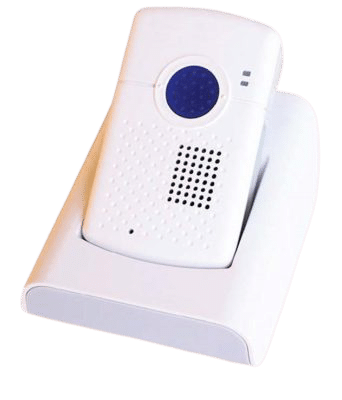Lone worker safety is paramount for any organisation. Our guide below outlines the importance of monitoring lone workers in any work environment and the solutions employers can use to reduce health risk and improve the protection of those working alone or in isolated and remote workplaces.
What is a Lone Worker?
A lone worker is anyone who is working alone, works in isolation or is located in a remote work environment by themselves. This can include people who are visiting people’s homes, home carers, social workers, doctors, or even pathologists.
If an accident or emergency situation were to occur, lone workers can be isolated from seeking help, safety and assistance.
Both lone working employees and employers should be proactive and take all reasonable and practicable safety measures to ensure the monitoring of these workers’ health and safety is occurring.
Below are some of the ways these safety measures can be implemented:
Download Our Ultimate Guide To Duress Alarms
What is the Safe Work Australia Definition of an Isolated Worker?
Safe Work Australia states that:
“Remote or isolated workers may be isolated from help because of where or when they are working, or the nature of the work they are doing. For example, they may be working in locations or at times where it would be difficult for them to be rescued, get medical assistance or be reached by emergency services. Workers may face additional WHS risks if nobody else is around to help with difficult tasks, alert them to hazards or give a second opinion about how to safely do a task, or notice if they are fatigued or making mistakes.”
Lone Worker’s ‘Working Alone’ Risk Assessments
One of the ways a lone worker can protect themselves before a home visit is by conducting a working alone along Risk Assessment Evaluation. By conducting this working alone evaluation in every new environment ensures that staff working alone in home/community settings are safe and potential risks are mitigated as much as possible prior to meeting any new clientele.
For the safety of all lone workers it is incredibly crucial that all new clients be carefully screened prior to commencement with a home/community based service to determine risks to both the workers/staff and or the client.
If the lone worker is a healthcare professional reviewing the clients’ medical record prior to the first face to face meeting will ensure that any potential risk factors are explored thoroughly during this screening process.
What Should a Lone Worker Safety Risk Assessment Review Include?
A Lone Worker Safety Risk Assessment Review should include, but not be limited to:
- Reviewing the ‘high risks accommodations’ list
- Understanding any known history of aggression or criminal history
- Understanding of any substance abuse
- Understanding of any known emotional or psychological concerns
- Being aware of any identified hoarding /squalor issues
download the Lone Worker Safety Risk Assessment Template
When professionals working alone are visiting a client in their home or community, they may need to contact the client to confirm arrangements prior to leaving for the visit, this would also mitigate potential risks or safety concerns.
It is also important that lone workers make every effort to be on time for scheduled visits and notify the client where possible if they become aware that they will be late or require the scheduled time to be revised.
It is also crucial that all lone working staff who undertake home community visits MUST have access to a mobile telephone and a separate lone worker safety device that works in Australia.
When using a shared lone worker duress alarm system, ensure the lone worker has checked in with their profile information at the start of their shift. The best lone working safety alarm has a monitoring service attached to it in order to support the worker 24/7 in the event of a safety issue.
Professional Lone Worker Conduct at all Times Within the Workplace
Lone working staff members should constantly be aware of their actions in relation to their own safety while on home/community visits including:
- Dress and modify behaviour appropriately for the environment
- Avoid physical contact wherever appropriate
- Be aware of the location or doors and exits
- Minimise home / community visits after dark
- Consider safety when parking: avoid parking away from the client’s house or in isolated or poorly lit areas
- Always lock the car, valuable should be out of sight, as should any papers or other item with identifying information on them
- Retain car keys, wallet, duress alarm and mobile phone on your person
- Professionals need to listen for any conflict that may be occurring on the premises prior to entering
Lone Worker Safety De-escalation Strategies
Staff working alone should generally refrain from accepting the offer of food and beverages when undertaking a home/community visit.
Staff members should employ additional strategies to increase safety where initial risk assessment has identified a potential risk or to clients where a risk has been previously identified.
Should a client or other person in the environment exhibit aggressive behaviour or a lone working staff member feels unsafe or threatened during a home visit, the staff member should take steps calmly to remove themselves from the environment. Once the worker is in a safe place they should press their duress alarm and/or contact their line manager.
Download Our Ultimate Guide To Duress Alarms
Lone Worker Safety When Animals are Present in the Workplace
- Workers must screen for the presence of animals when conducting the Home/Community Visit Risk Screen and advice clients’ prior to conducting a home/community visit that their animals must be locked /isolated in another area prior to and for the duration of the visit.
- Workers should be aware of the environment when they exit their car. If an animal or risk is evident and not restrained, staff must contact the client prior to entering the premises.
- Where required, clients will be contacted in advance to ensure animals are restrained prior to, and for the full duration of the visit.
- Workers should not conduct a home/community visit if any concern exists regarding animals. This should be discussed with in-line managers as to the risk that staff are potentially exposed to, including options for visits to occur at other suitable/alternate locations.
Alarm System for Lone Worker Safety in the Workplace
Lone worker safety systems like a duress alarm (worker alarm or worker safety alarm) must be in place to ensure lone staff workers are monitored when on home or community visits.
A lone working duress alarm allows an employer to have the reassurance knowing that their staff are safe while working alone or out in the community and should a worker require emergency assistance, help is available to them at the press of a button 24/7.
Lone Worker Safety Monitoring
MePACS duress alarms offer a 24/7 monitoring response service, which is ideal for lone workers and people working in the community, who are isolated or work at night. It’s a fully monitored service responded to by trained professionals based in Australia, so you can be assured that when assistance is required, you get the right help to your team quickly to ensure safety is maintained.
In the event of an accident, violence, assault, fire or even medical emergency for you or a client, once the alarm is pressed MePACS will contact you within 2 minutes to find out what help you need and contact either a manager, security team or 000.
MePACS Duress Alarm Systems have the following features which provide extra safety and reassurance for both the employer and their staff working alone:
- Quick and simple to use
- One button activation
- Two-way communications via the alarm
- Mobile alarms are splash proof
- Solo watch alarms are water resistant
- GPS locator in duress alarm



